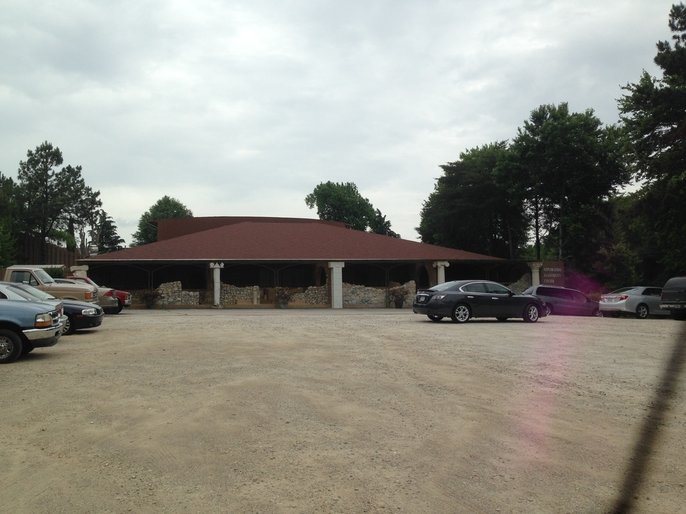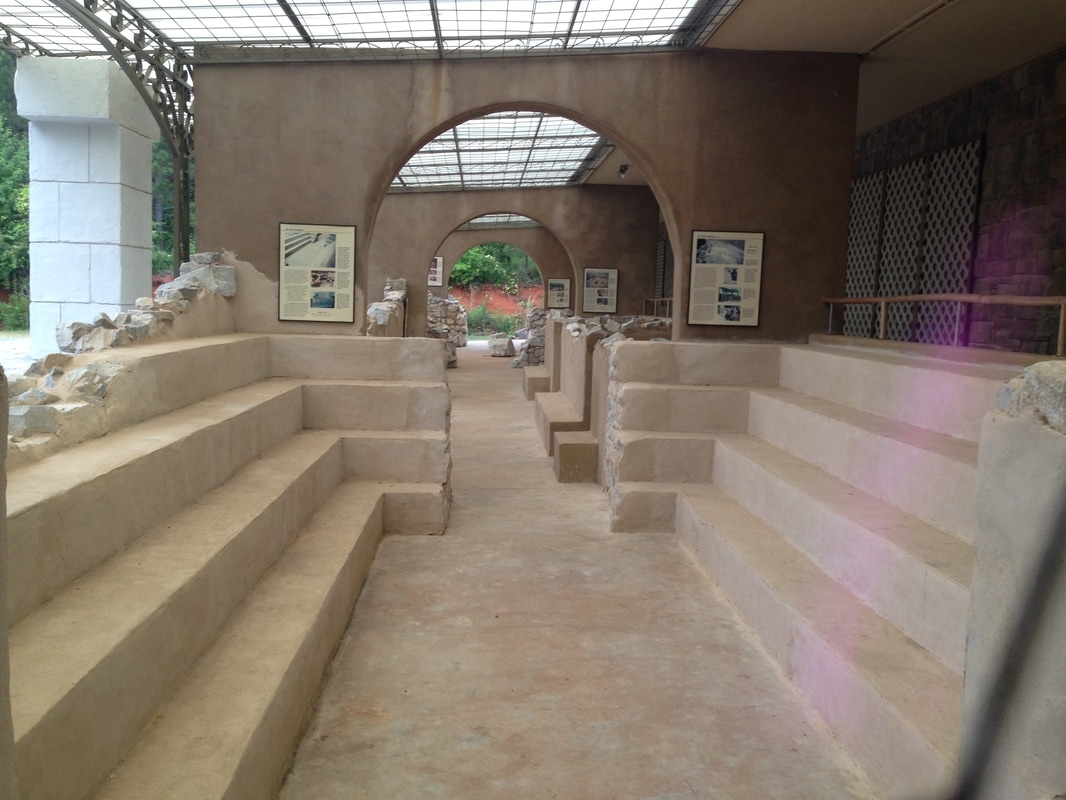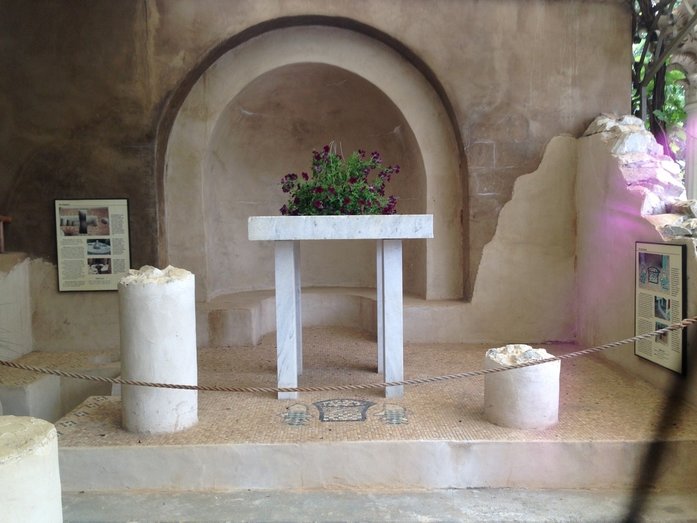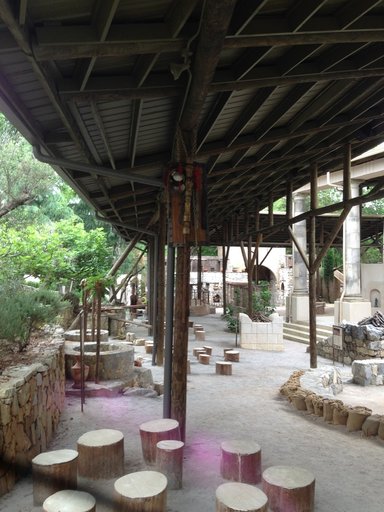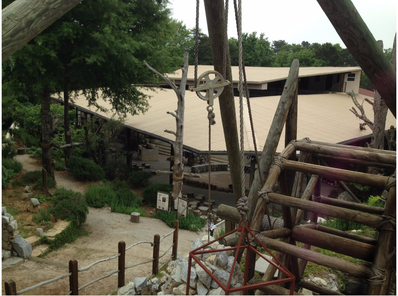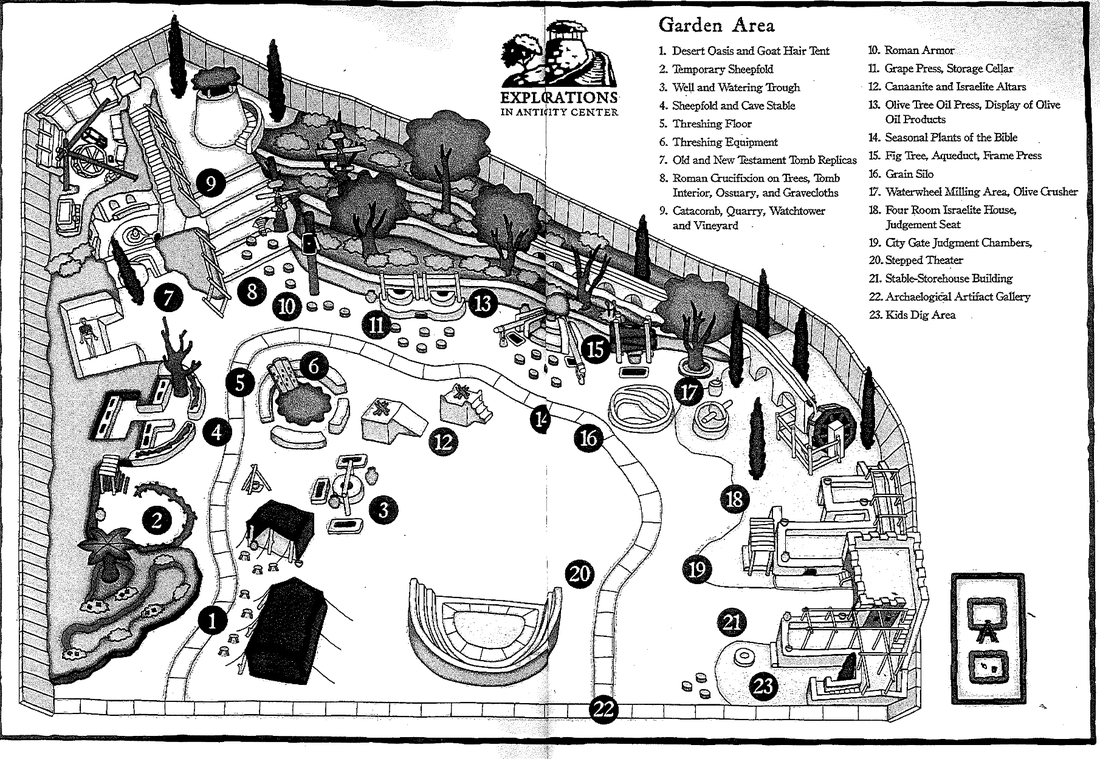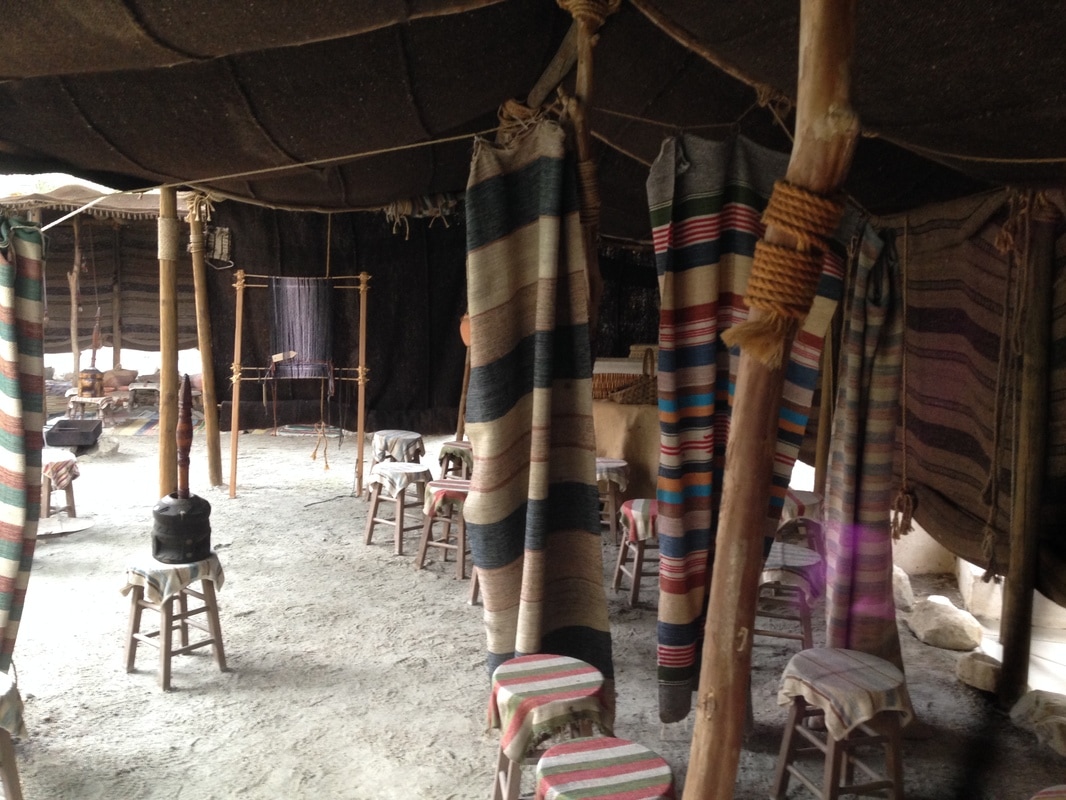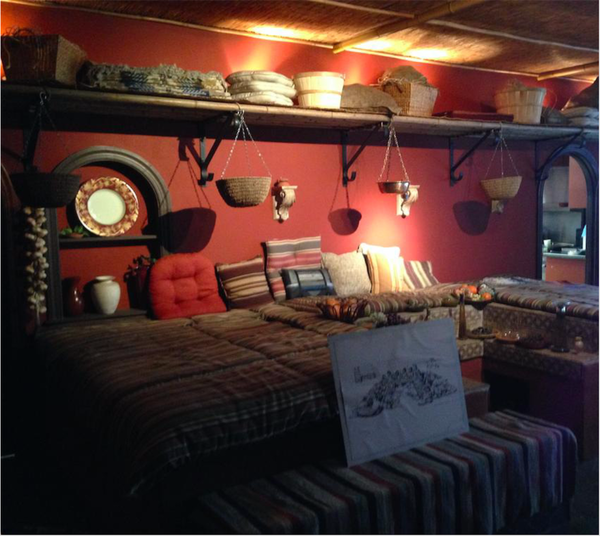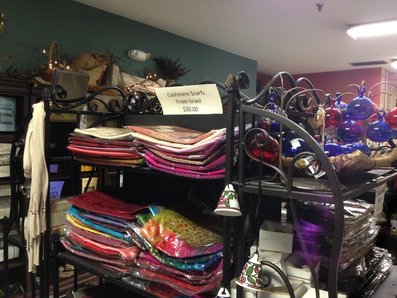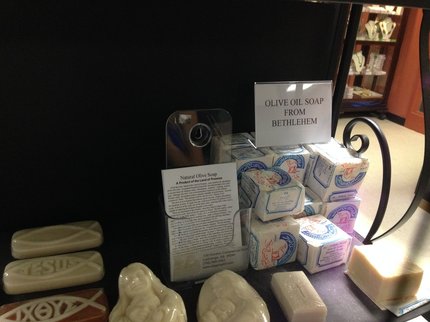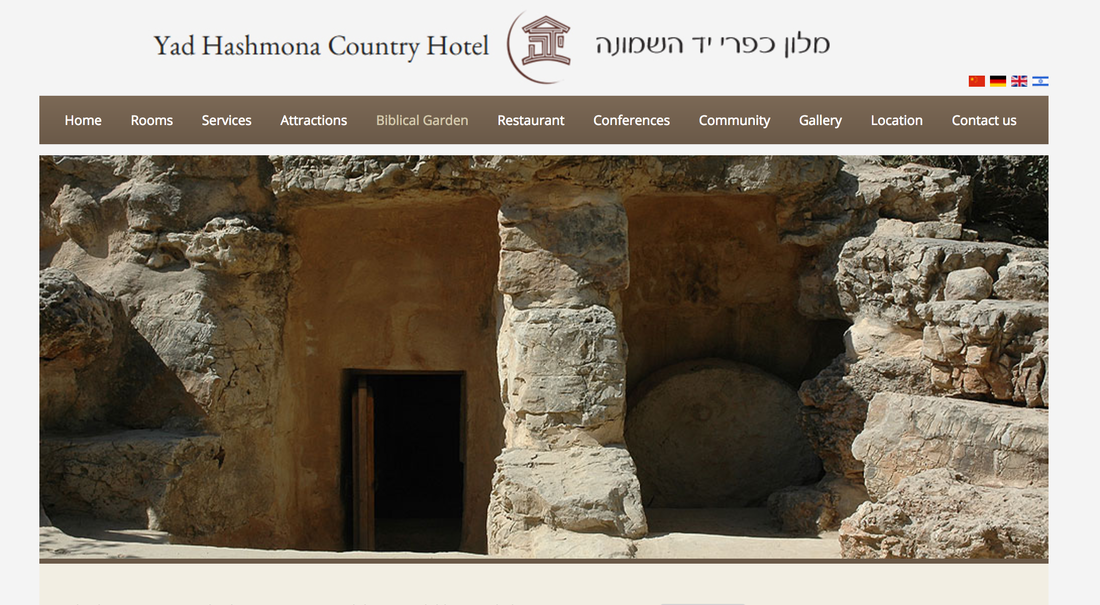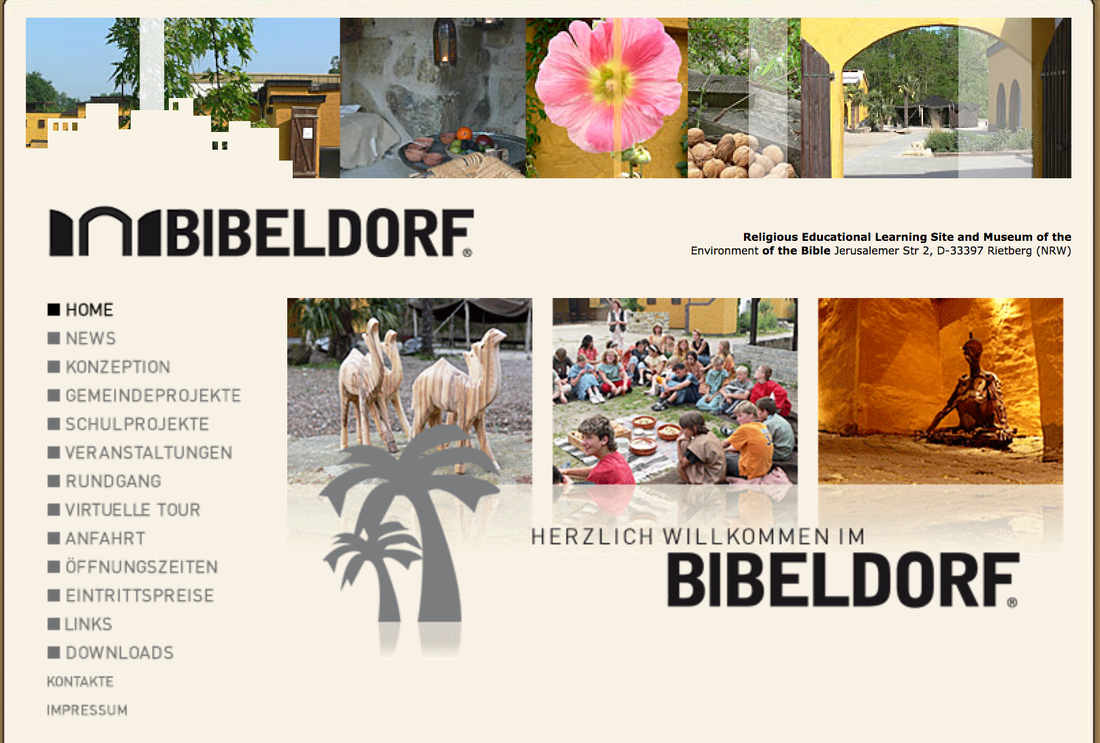Biblical History Center
LaGrange, Georgia
Virtual Tour (2017): Claire Vaughn & James S. Bielo
Founded in 2006, the Biblical History Center* re-creates everyday scenes of the biblical lifeworld; from domestic arrangements to agricultural practices. Their ambition is to "help people understand the Bible and the ancient world in its historical and cultural context."
(*Formerly: Explorations in Antiquity Center)
(*Formerly: Explorations in Antiquity Center)
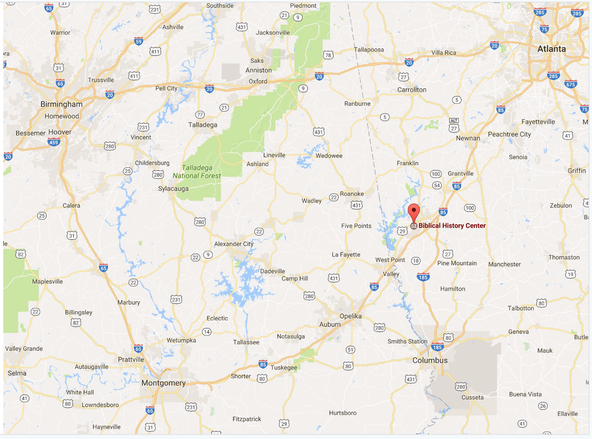
La Grange is a
small city in west-
central Georgia;
about 70 miles
southwest of
Atlanta near the
Alabama border.
The immersive pedagogical approach of the Biblical History Center begins directly after the parking lot. The first space visitors encounter is the building's front exterior, which includes a series of replicas, such as an ancient Israelite synagogue and early Christian ritual spaces.
|
The Biblical History Center’s main display is the archeological garden. Walk among assorted re-created scenes from the biblical lifeworld: goat hair tent, watchtower, grape stomping vat, threshing floor, olive press, household kitchen, water well, amphitheater, vineyard, grain silo, and more...
|
Inside the goat hair tent: sit on the wooden stools, feel the coarse goat hair material, and move among domestic replicas - a weaving loom, storage pots, a weight scale.
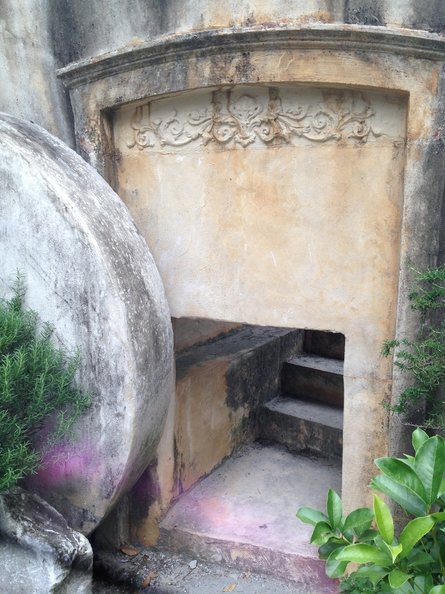 Replica of 4th Century tomb at Biblical History Center
Replica of 4th Century tomb at Biblical History Center
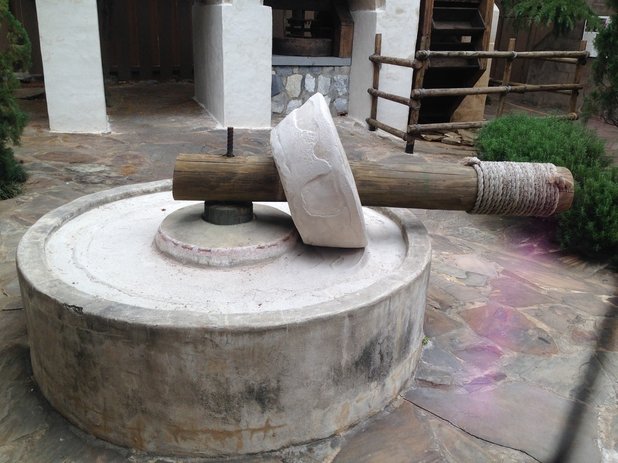
Push the heavy millstone, and feel the momentum of the centripetal force build in the small circular path.
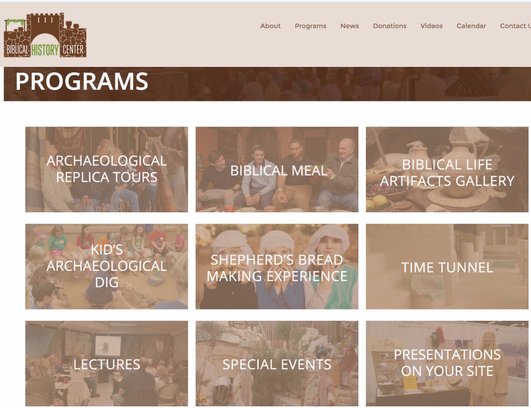 Screenshot from Biblical History Center website (February 2017)
Screenshot from Biblical History Center website (February 2017)
Although the archaeological garden is the main display, the Biblical History Center offers a range of other pedagogical experiences that promise to immerse visitors into the biblical lifeworld...
|
At a biblical meal, visitors eat "typical" foods from the time of Jesus in spaces that replicate first century dining environments. The gustatory link between present and past created by the biblical meal echoes related strategies, such as Eileen Gaden’s 1976 cookbook: Biblical Garden Cookery.
|
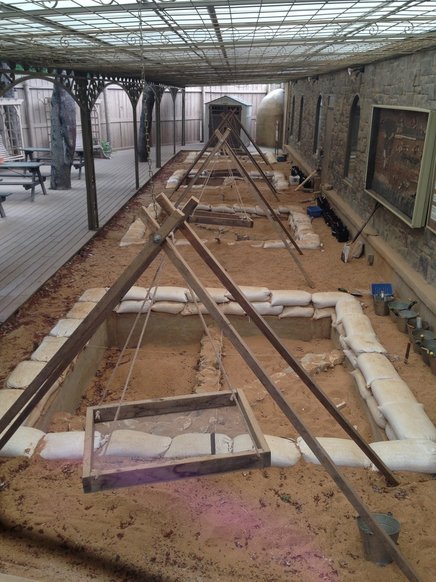
In the "Kid's Archeological Dig," children can role play as excavating archaeologists in the as-if re-creation of active dig sites.
A gift shop extends the Biblical History Center’s ambition to connect visitors to Israel. Many of the items sold are imported from Israel-Palestine, such as Bethlehem soap. The Biblical History Center has close affinities with Christian Zionism. Note the erasure of Arab culture and statehood:
cashmere scarves, no keffiyeh; no mention of the West Bank.
cashmere scarves, no keffiyeh; no mention of the West Bank.
It is important to observe that the Biblical History Center is not unique in global context. Attractions in Israel (e.g., Biblical Garden at Yad Hashmona), Germany (e.g., Bibeldorf), and the Netherlands (e.g., Museumpark Orientalis) have similar historical replicas, biblical meals, and related immersive avenues into the biblical past.
|
|
The Biblical History Center was founded by James Fleming, a theologically-trained archaeologist who has worked and lived in Israel since 1973. Meet Jim here, in a 2012 interview with Christ in Prophecy, a Christian Zionist television ministry. In this segment, Fleming explains the Center’s re-created goat hair tent... |
|
In performing this guided tour, Fleming mobilizes the embodied experience of interacting with historical re-creations to challenge official bodies of religious authority (see transcript). For example, in presenting the vineyard he speaks back to Bible translators... |
|
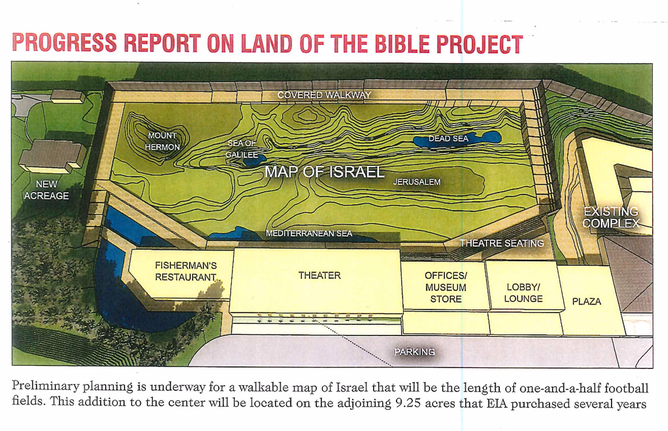
Materializing the Bible is an open
process, which means sites like the Biblical History Center are ever expanding. In 2015, they
announced plans to construct a
walking, scale model of Israel.
This reprises America’s first Holy Land replication, Palestine Park: a 400-foot landscape model built in 1874 at New York’s Chautauqua Institution. Like its Methodist predecessor, this walking map would combine embodied experience and as-if imagining to teach about scripture.
Materializing the Bible is an open
process, which means sites like the Biblical History Center are ever expanding. In 2015, they
announced plans to construct a
walking, scale model of Israel.
This reprises America’s first Holy Land replication, Palestine Park: a 400-foot landscape model built in 1874 at New York’s Chautauqua Institution. Like its Methodist predecessor, this walking map would combine embodied experience and as-if imagining to teach about scripture.
